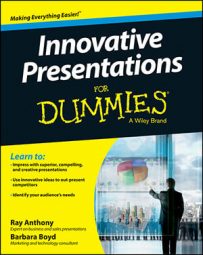Often you give an innovative presentation at an event, such as a conference or tradeshow, conveying information the audience will use to make a decision or take another action. At a meeting, instead of a mostly one-way presentation, everyone there discusses a topic with the objective of planning something or coming up with a solution to a problem with a client, partner, or your staff.
You may still find yourself in the role of principal presenter or your role may shift to one of meeting facilitator, whether physically face-to-face seated in the same room or remotely located and viewing the other attendees on a screen.
When meeting attendees gather from remote locations and meet online, some people call that a virtual meeting, also known as a videoconference. Essentially, each attendee uses the same app or signs in to the same URL from a tablet or computer, and participates in the meeting from the comfort of his own office, home, or hotel.
Specific companies manage videoconferences for a fee. You reserve a virtual meeting room, which attendees access from an app or a URL.
You, and other attendees, can upload visuals such as a PDF or presentation to accompany the discussion, and most service providers offer the possibility of screen sharing and a virtual whiteboard so that more than one person can show something on his computer or write notes on the shared document or whiteboard.
In a webinar, or web-based seminar, you present to attendees who watch, listen, and ask questions — much like its literal counterpart. Most services offer a call-in option or a direct connection with a computer’s or device’s built-in mic and speaker.
With a call-in webinar, attendees call a conference-enabled phone number while viewing the visuals on a browser and ask questions from the telephone. If attendees use mics and speakers built into their computers or devices, they can ask questions directly or via written chat. The presentation or video is streamed live, and the attendees can number in the thousands.
During a webcast, attendees watch and listen to the live, streaming presentation but don’t interact with the speaker.
Webinars and videoconferencing can be cost effective when compared to traveling and renting a meeting or event space, especially if you’re a small business. They can also be an effective way to do market research or have an initial meeting with a potential client without taking up too much of his time. Both are great ways to host press conferences, board meetings, and industry-specific events with a smaller, discreet audience.

